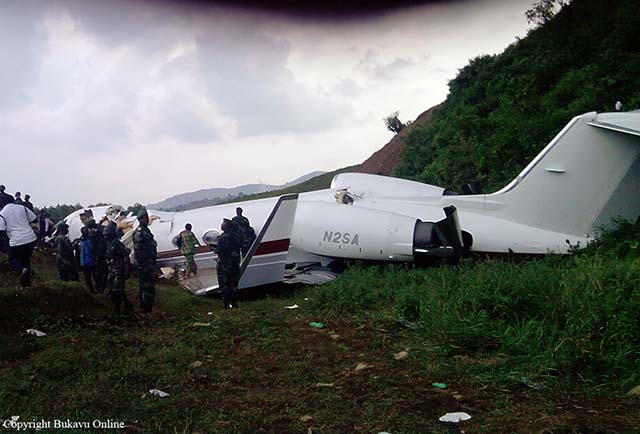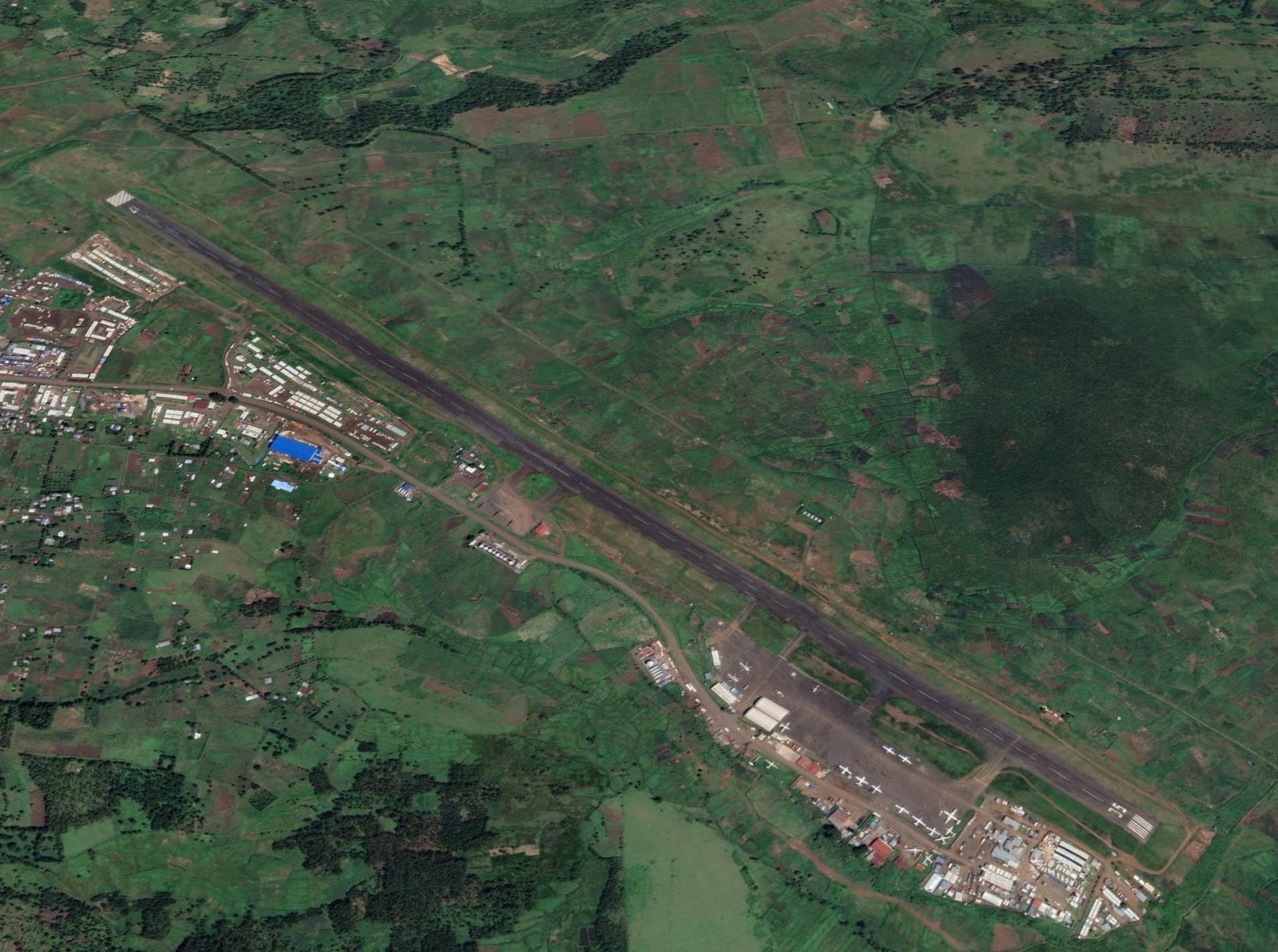There is very little published about this mishap right. The NTSB was involved, but it appears they have "uninvolved" themselves. We do have some information from the Bureau of Aircraft Accident Archives (B3A).
— James Albright

Updated:
2022-06-24

N2SA, from
Aircraft Crashes Record Office
We are told, somewhat anecdotally, that the crew made an approach above the normal glide path, touched down almost 4,000 feet from the runway threshold, and did not use the aircraft's ground spoilers. Needless to say, they didn't make it.

1
Accident report
- Date: 12 February 2012
- Time: 1300
- Type: Gulfstream GIV
- Operator: Katanga Express
- Registration: N2SA
- Fatalities: 2 of 2 crew, 2 of 10 passengers
- Aircraft Fate: Damaged beyond repair
- Phase: Landing
- Departure Airport: Goma Airport (FZNA), Congo Democratic Republic
- Destination Airport: Bukavu-Kavumu Airport (FZMA), Congo Democratic Republic
2
Narrative
On February 12, 2012 at about 1120 UTC, a Gulfstream, GIV, registration N2SA, operated by Trident Aviation of Wilmington, Delaware, crashed at Bukavu-Kamenbe Airport (BKY), Bukavu, Democratic Republic of Congo (DRC). The domestic private flight departed Kinshasa with an intermediate stop at Goma to enplane passengers and to refuel. During the landing at BKY, the airplane overran the runway, went down an embankment and came to rest in a ravine. Of the 12 persons on board, there were four fatalities, including the pilot, copilot and two passengers. The airplane was substantially damaged and there was no fire.
Source: NTSB Preliminary DCA12WA037
Note: this preliminary report has been deleted from the NTSB website, as if it never existed.
3
Analysis
Wrong approach configuration on part of the crew. Aircraft landed 1,200 metres after the runway threshold. Runway is 2,000 metres long.
Source: Aircraft Crashes Records Office
For our non-metric pilots: the runway was about 6,500 feet long and they landed almost 4,000 feet beyond the threshold.
4
Cause
It was determined that the crew was not focused on the landing procedure during the approach, causing the aircraft to be well above the glide. In such conditions, the aircraft landed 1,200 metres past the runway threshold (the runway is 2,000 metres long). After touchdown, the crew activated the reverse thrust systems on both engines but the spoilers were not used. With a landing distance of about 800 metres, the aircraft could not be stopped in a safely manner and the crew failed to initiate a go-around procedure.
Source: B3A
References
(Source material)
Aircraft Crashes Record Office, Bureau of Aircraft Accidents Archives, (B3A), Geneva, Switzerland
NTSB Preliminary Information, DCA12WA037, Gulfstream G-IV, N2SA, Bukavu, Congo, February 12, 2012
Radio Okapi, Informations pour la Paix et le développement de la RDC, DRC: plane crashes at Bukavu airport, 4 dead, 12/02/2012
